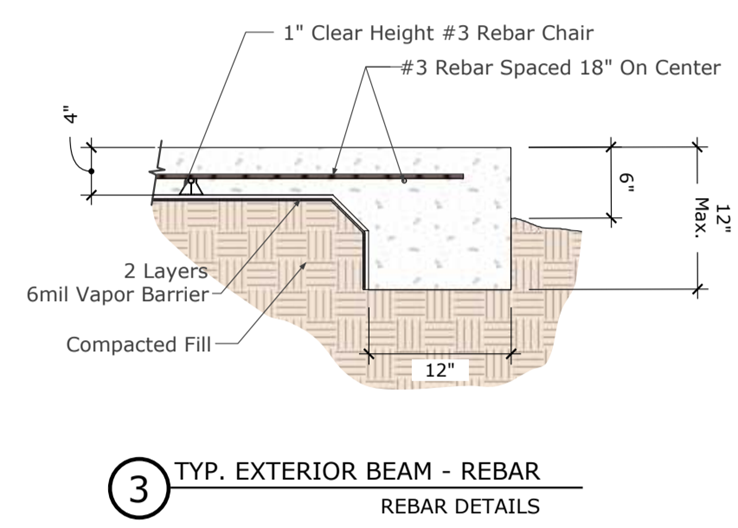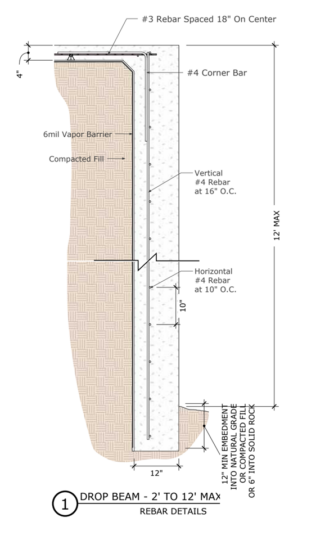 What Is a Concrete Turndown Beam?
What Is a Concrete Turndown Beam?
Constructing a high-quality court involves various techniques to ensure stability and durability. One essential part in this process is the turndown beam. In this short blog, we share a closer look at what a turndown beam is and why it’s crucial for your court.
Building Up the Court
When there is an uneven or a sloped area it’s important to level the ground before pouring the concrete. In order to do this, we need to build up the ground on the lower end using the dirt excavated from the higher side. This process known as a cut and fill creates a balanced and level subsurface.
Creating the Turndown Beam:
Once all of the excavated dirt is moved to the low side it’s critical to construct a barrier to keep it from shifting. A turndown beam is constructed to hold back this built-up dirt and provide structural support. In a 3-step process we are able to build a structure that creates a permanent barrier for that built up dirt.
Here’s how it’s done:
- Sandbag Wall:
- First, we construct a wall using sandbags, which are stacked up and compacted thoroughly. This wall stretches along the lower side of the court, providing a sturdy base.
- Build wood form for the Turndown beam:
- Next, we create a form 6 to 12” away from the sandbag wall. This is where the concrete will be poured into it. Rebar reinforcement is added to provide strength and structure.
Pouring Concrete:-
- Finally, the concrete is poured into the rebar-reinforced beam. After the concrete has properly cured, the wood walls are removed. Removing these walls too soon could jeopardize the strength, removing the walls too late can cause the wood to adhere to the concrete leaving an undesirable finish.

- Finally, the concrete is poured into the rebar-reinforced beam. After the concrete has properly cured, the wood walls are removed. Removing these walls too soon could jeopardize the strength, removing the walls too late can cause the wood to adhere to the concrete leaving an undesirable finish.
-
The Result
Once the concrete is poured and the forms are removed, you will see a continuous wall of concrete. This structure not only supports the court but also prevents erosion and shifting of the underlying materials.
Conclusion
Turndown beams are a vital part of constructing a concrete slab, especially when dealing with uneven terrain. By reinforcing the court’s edges with sandbags, rebar, and concrete, we ensure a stable and long-lasting playing surface. Whether for recreational or professional use, this technique is key to maintaining the court’s integrity and performance.
Next time you’re enjoying a game, remember the construction magic that keeps your court perfect!














